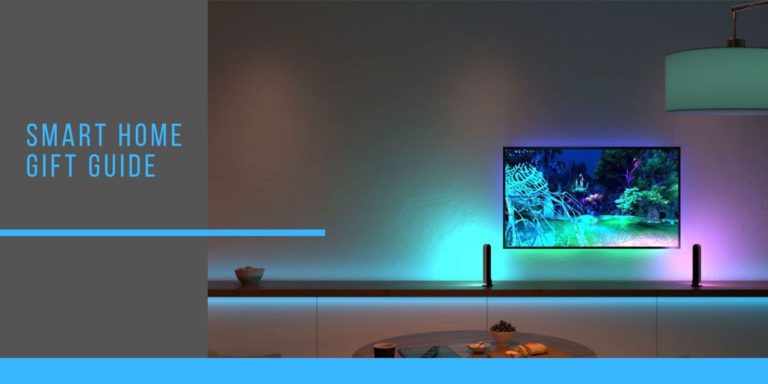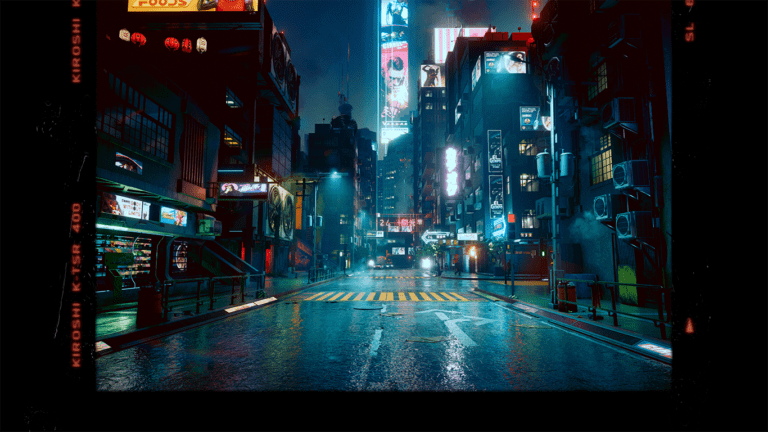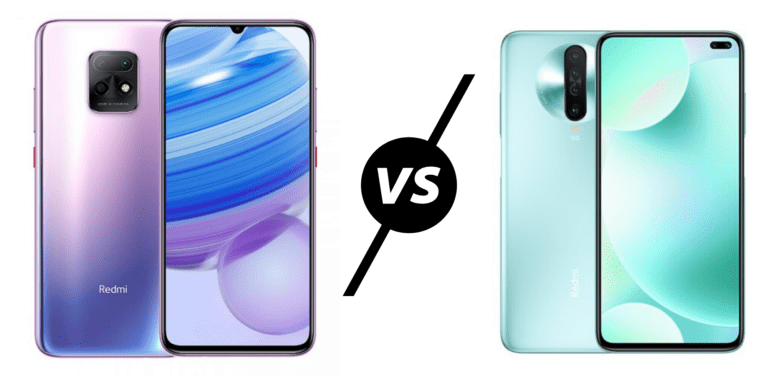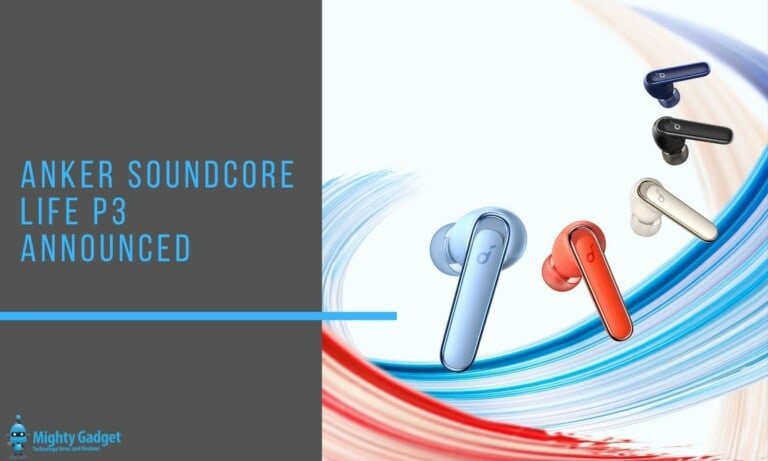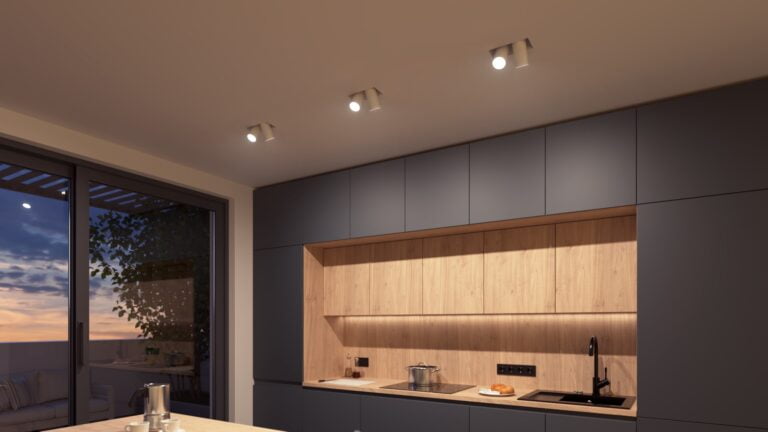Any links to online stores should be assumed to be affiliates. The company or PR agency provides all or most review samples. They have no control over my content, and I provide my honest opinion.
The Philips Hue Signe Gradient Floor Lamp has been around for a few years now, but it was recently updated with a new natural wood-toned base and signature slender profile.
The existing colourways are white and black, and the new oak model is very similar to the white model, just with oak elements on the base.
Currently, you can only buy the oak lamp directly from Philips Hue.
| Preview | Product | Rating | Price | |
|---|---|---|---|---|

| Philips Hue Signe Gradient White & Colour Ambiance Smart... |
£229.00 | Buy on Amazon |
What is it?
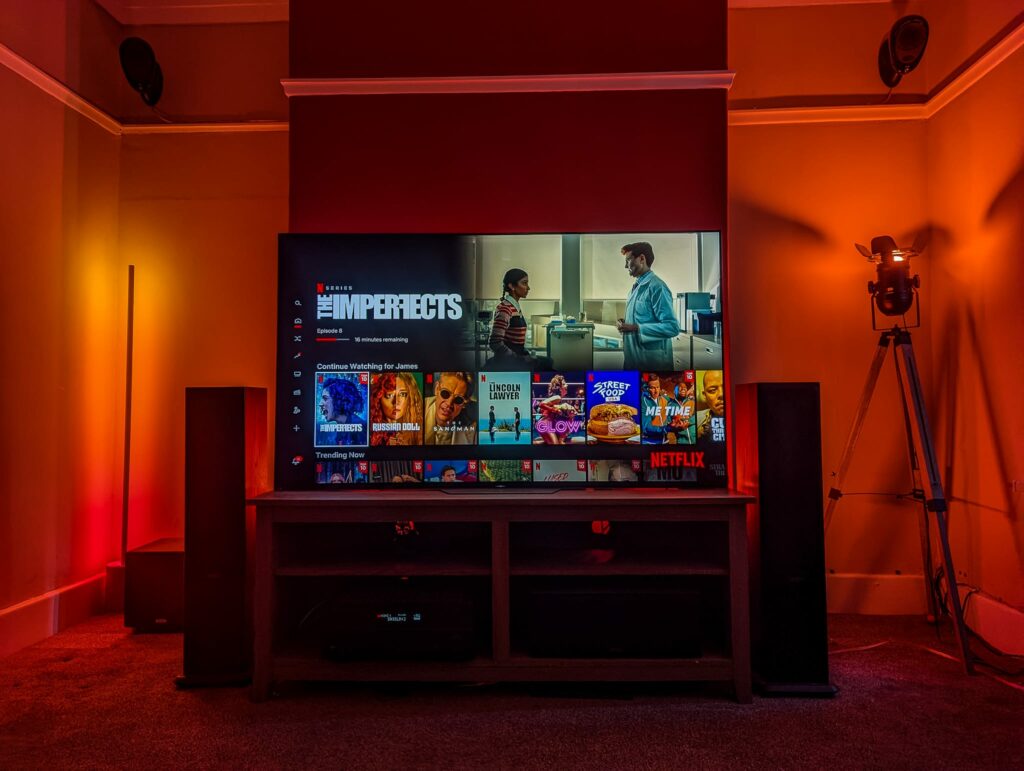
Normally I’d list a product specification here, but it is easier to explain. This is a floor lamp with one thin column which has lighting on one side.
This is a gradient lamp, so it can display multiple colours all at once. Specifically, you have three points of colour which then merge together.
It is designed more for the visual effect rather than total brightness. Similar to the light strips and play bar, you get the best results pointing this at something to produce an aesthetic lighting effect.
At a temperature of 4000k, this produces 2,550 lumens, and Philips Hue claims the LEDs have a 25000-hour lifespan, which is about 8 years 6 months if you had the light on for 8 hours per day.
Signe Gradient Lamp vs Signe Lamps
Signe gradient lamps offer multiple colours of light at the same time over their entire length. The older Signe could only produce one colour of light at a time. Additionally, the new design has a rounded base and is available in black, white and oak.
Set Up
The Signe Gradient Lamp is Bluetooth compatible, so you don’t have to use it with a Philips Hue bridge. However, I already have a lot of Hue products and therefore integrated it with my current system.
Philips Hue is one of the easiest to use smart home systems I have tried. Adding it to the system just required me to power up the light, search for it and follow the set-up procedure adding it to the room and zone I wanted.
Light Sync
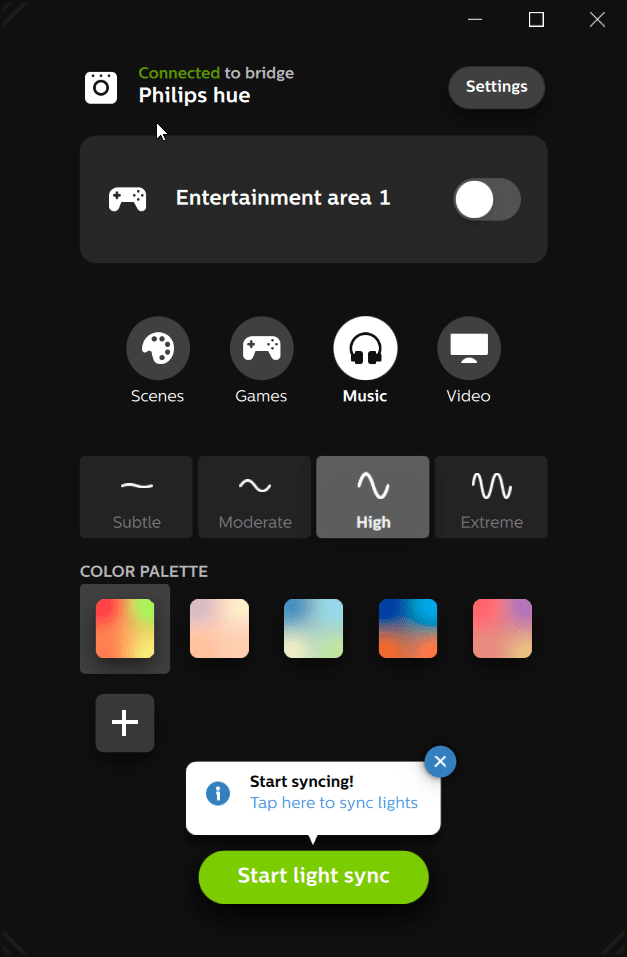
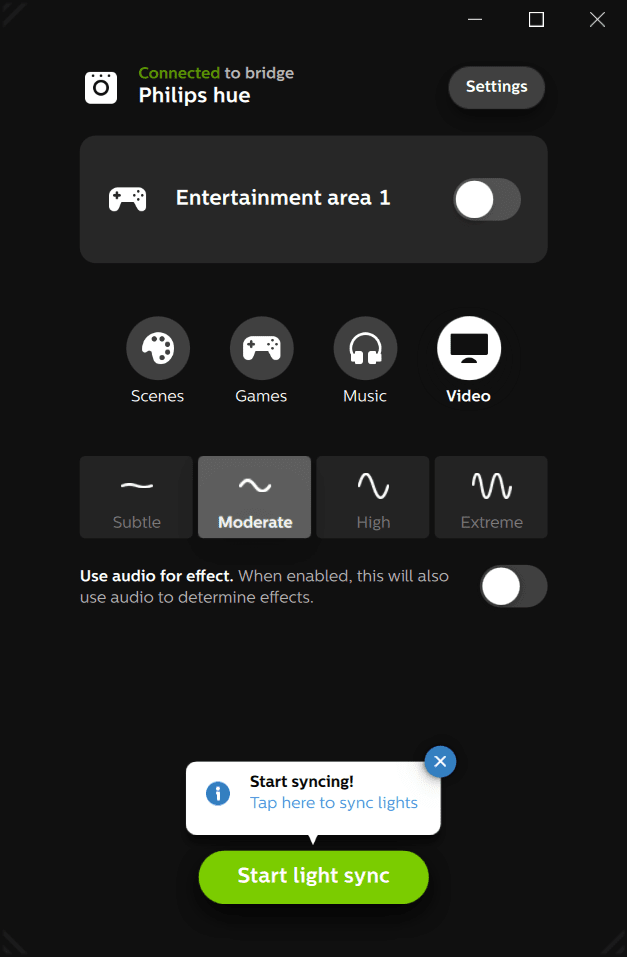
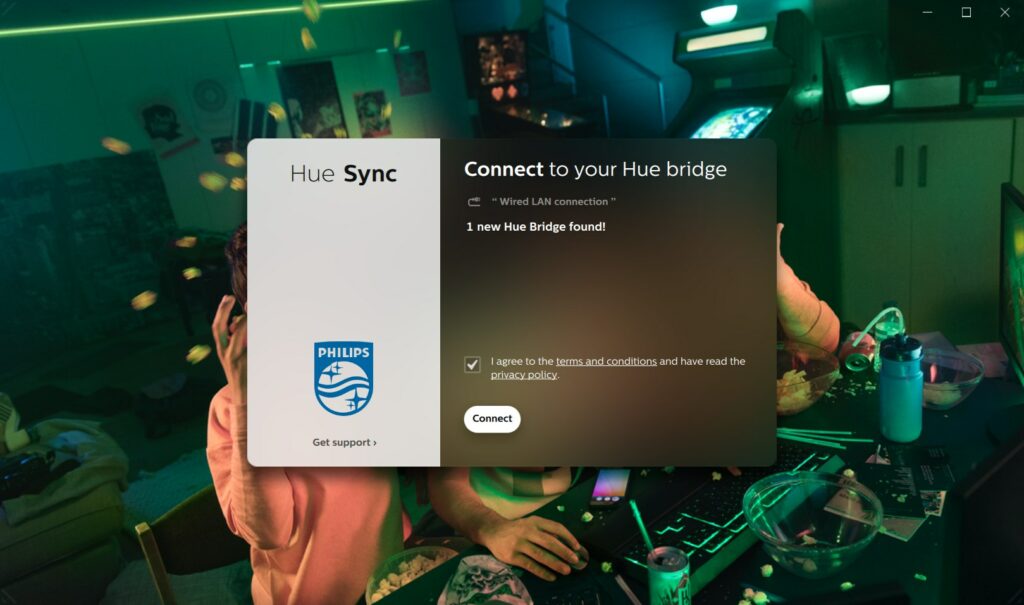
This light works well in a TV area and will complement the LED strips and play bars well. At least, that’s how I set it up.
I rarely sync up the lights to the content I watch, but it is possible and provides an impressive visual effect.
At the moment, I don’t have a Hue Sync box as it does not have HDMI 2.1, and this causes problems with Dolby Vision and 4K content. Hopefully, they will launch a new model soon.
The most reliable solution is to use a proper PC and the Hue Sync desktop app. Alternatively, there are some Android apps that can work with the Nvidia Shield and other devices to do some basic light syncing.
In Use
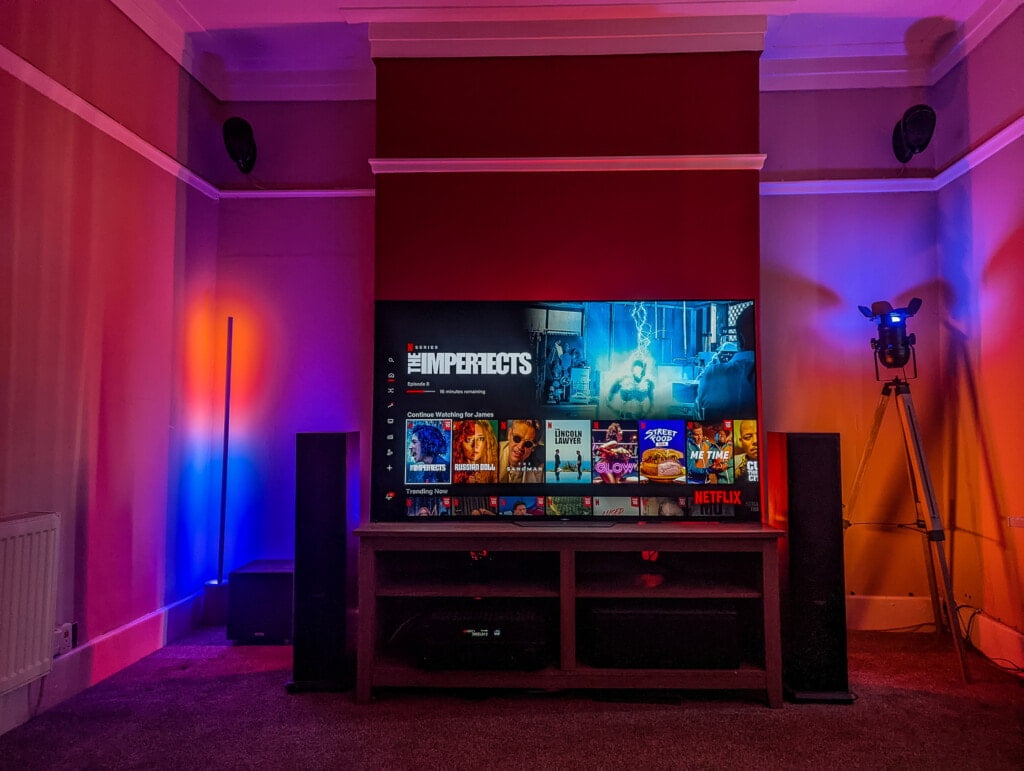
I set the lamp up in my main TV area, where I already have several Hue products. Behind the TV is a Philips Hue Lightstrip Plus v4 and two Philips Hue Play white and colour ambiance light bars. Then the lamp to the right is a colour ambiance E27 bulb.
All the devices are mapped to a TV zone, and I have the dial on the Tap Dial Switch mapped to that zone.
Due to the direction that the power cable comes out, I assume Philips designed the lamp to be pointed at the wall, giving you a gradient reflection against the wall. You could point it away at you, but I hate lights pointing at me.
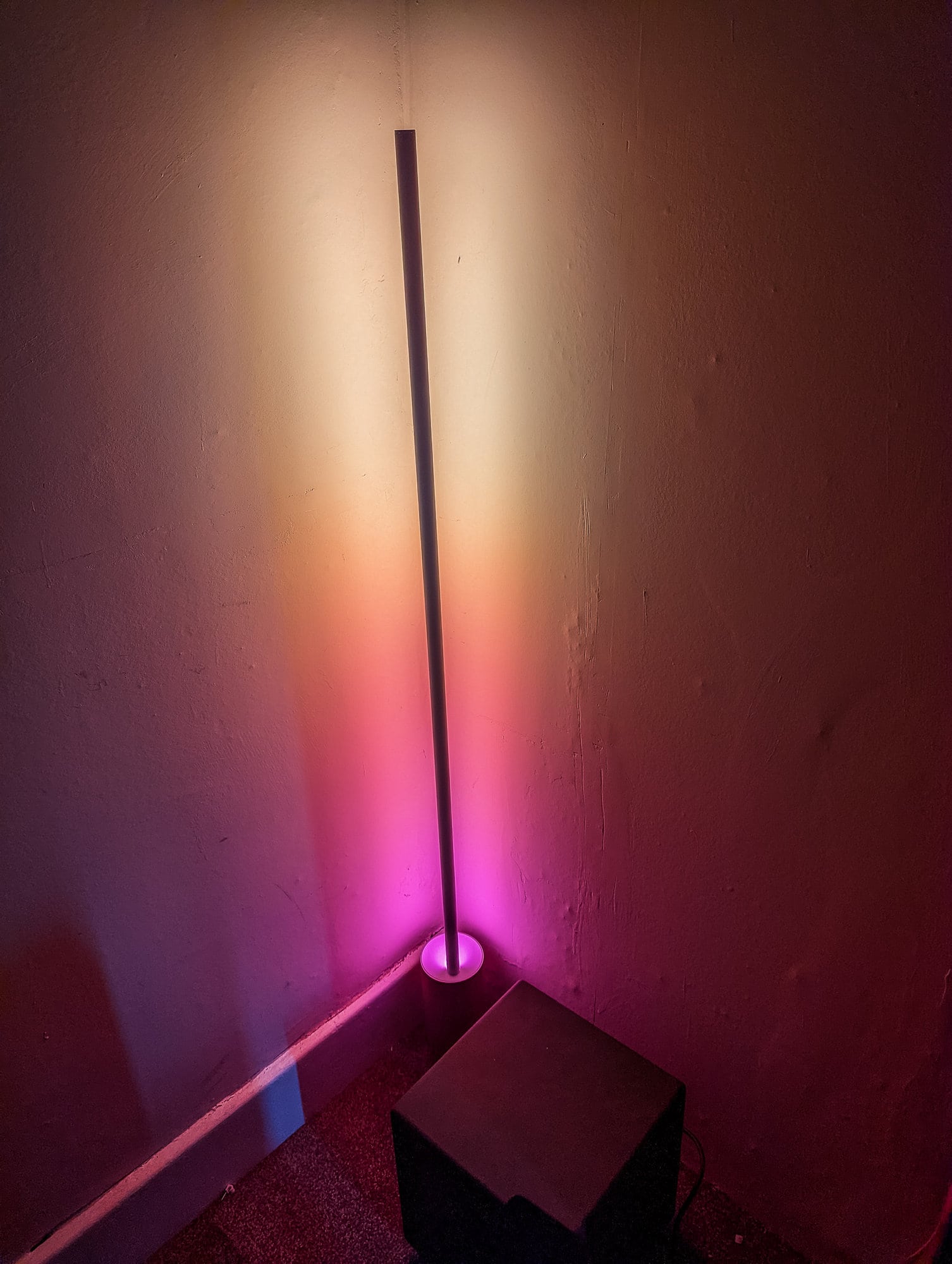

It lets off an impressive amount of light. The gradient effect and colour range is superior to other lights I have used, including the Twinkly Flex. It is not really a very good like-for-like comparison, but the light is significantly better than the Play bars, light strip and the single bulb I have around the TV. It costs about the same as all of them put together, too.



Like all Philips Hue ambience products, there is an incredible range of pre-sets that you can choose from, or you can manually adjust the lights. For this light, you have three colours to choose from, and these will then merge into each other to form the gradient. Selecting a scene with multiple devices will have different colours applied across all of the Hue devices within that scene for something much more visually impressive than a single bulb.
There is also an option to select animation effects such as candle or fireplace. Personally, I am not overly keen on these as it sort of looks like the lights are playing up, but I am quite fussy about moving lights.
Price and Alternative Options
The oak model of the Philips Hue Signe Gradient Floor Lamp has an RRP of £299, while the black version is available on Amazon for £279.
Buy the oak lamp from Philips Hue
| Preview | Product | Rating | Price | |
|---|---|---|---|---|

| Philips Hue Signe Gradient White & Colour Ambiance Smart... |
£229.00 | Buy on Amazon |
The table variant has an RRP of £199, and you can get either the black or white model on Amazon for around £165.
For some context, this lamp is 1.5m high. Philips Hue has the 2m Gradient Lightstrip for £170 or the 1.3m Gradient Tube for £190. The lamp is a lot brighter at 2,550 lumens vs 1800 lumens of both the lightstrip and tube. Even though the lamp does feel overpriced, it is not really that bad when you compare it to the other Gradient range of products.
The Govee Lyra is the closest alternative product I can think of, and it is priced at just £130, but this is obviously not of much use if you are invested in Hue.
Overall
I love the Philips Hue Signe Gradient Floor Lamp. The lights are both bright, the colours vibrant, and the Hue ecosystem is a pleasure to use compared to many smart home solutions.
If you are heavily invested in Philips Hue, then this is a product I would certainly recommend, and I find that it excels in a TV room when used in conjunction with other Hue devices like the light strips and Play bars.
However, there is no getting away from the fact that it is very expensive. Philips Hue products already come at a premium price, and this feels quite expensive on top of that. I’d keep a lookout during the Black Friday and Christmas sales, but currently, there have not been many discounts on any of the Signe Gradient lamps.
Philips Hue Signe Gradient Floor Lamp in Oak Review Rating
Summary
The Philips Hue Signe gradient lamp is a superb addition to the gradient range of products. It is very expensive, but it is a beautiful addition to existing Hue setups.
Overall
80%-
Overall - 80%80%
Pros
- Bright and vibrant colours for a visually impressive effect
Cons
- Price
I am James, a UK-based tech enthusiast and the Editor and Owner of Mighty Gadget, which I’ve proudly run since 2007. Passionate about all things technology, my expertise spans from computers and networking to mobile, wearables, and smart home devices.
As a fitness fanatic who loves running and cycling, I also have a keen interest in fitness-related technology, and I take every opportunity to cover this niche on my blog. My diverse interests allow me to bring a unique perspective to tech blogging, merging lifestyle, fitness, and the latest tech trends.
In my academic pursuits, I earned a BSc in Information Systems Design from UCLAN, before advancing my learning with a Master’s Degree in Computing. This advanced study also included Cisco CCNA accreditation, further demonstrating my commitment to understanding and staying ahead of the technology curve.
I’m proud to share that Vuelio has consistently ranked Mighty Gadget as one of the top technology blogs in the UK. With my dedication to technology and drive to share my insights, I aim to continue providing my readers with engaging and informative content.
Last update on 2025-07-18 / Affiliate links / Images from Amazon Product Advertising API


